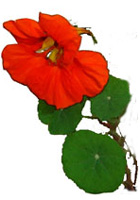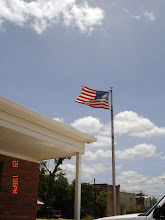9" x 12"
watercolors
Ashton and I have been watching two bright planets in the west while we were out watching the space station and shuttle fly over. Two spectacular groups of orange lights in the west, just south of the sunset, attracted our attention. He mentioned wanting a telescope, which is something we have all wanted. However, we have never found one that worked any better than a camera with a good zoom lense. At least one that was anywhere near affordable.
Friday night offered us a wonderful opportunity to actually see some decent telescopes and related equipment.
The Brazos Valley Astronomy Club, along with some students from A&M and Blinn, set up telescopes, computers, and a large screen on the grounds of the George Bush Library Friday evening. We arrived a little early, while there was still some light from a gorgeous sunset. Ashton and I wandered around the telescopes, along with an interested crowd of adults and children. We were given a star chart so we could determine what we were seeing. Children were given a deck of star cards with pictures and information concerning the current exhibit at the Library. The current exhibit is on space exploration and is coordinated with other displays at presidential libraries that include the LBJ Library in Austin.
We wandered about on the dark grounds, that had just a little light from a temporary building in the parking lot, the airport tower, and the lights on the Library. As it grew dark, though, I was a little concerned about not being able to see where I was putting my foot, due to my eye problems and the fact that they had just installed a water pipeline and there was still quite a bit of clumps of dirt around. One of the nice things about the George Bush Library is that it is one of the few places that I know of where you don't have to worry about fire ant stings.
We enjoyed listening to the discussions of the stars and planets above us. The two "stars" that we had been watching are actually Venus and Jupitar, and we see them best when they are setting. It's too light before that time.
Ashton asked a question about the twinkling star that we saw above the Library. The astronomer, who was working with one telescope, told us that the star appeared to be twinkling because of the atmosphere. I felt like this was "Mythbusters", or something. I always heard that, if it twinkled, it was a star, if not, it was a planet. Of course, most of my science classes were at a time when we were just learning that there were such things as atoms! (Well, actually, I did take a few classes after that in subjects like Microbiology, and I was around people interested in science. Of course, we hear quite a bit on tv, now. So, I wasn't totally ignorant of new things in science. I just had not heard this about stars.)
We got to view Jupitar and 4 of its moons, Venus, and the Ring Nebula, before we had to leave. We were told that the Ring Nebula is what our sun is going to look like thousands of years in the future. A couple of computers were set up near the small building and there was a screen with one computer that we could view a larger image of the sky.
We didn't stay but about an hour so I'm sure that we missed other stars that appeared later.
I had to laugh when they asked if we could see things. I told them that they would be amazed if they could see what I see. It looked like a carnival midway, with all the colorful lights moving around. The airport tower and planes landing looked like a midway with a fireworks display. The stars looked like smudges or bursts of fireworks. Through the telescope lenses, the planets and stars looked like small suns, very bright, but they didn't have the lights shooting out as I see them, nornally. I was surprised at that. I thought I would see the wild lights, but larger and more detailed.
We enjoyed the evening, but had to leave early so Ashton could get to bed early. UIL was the next morning. It was a little on the cool side, but a beautiful night for star gazing. I was a bit surprised that they didn't meet somewhere further away from lights from the city. But they seemed to have a clear view of the heavens.
In the painting above, I used Winsor Newton watercolors on 65 # drawing paper. This is too thin and the wrong texture for watercolors, but it is in my sketchbook. I started with a pencil sketch, then outlined with a waterproof drawing pen. I added watercolors, then did a wash of thin black watercolor to dull and darken it all.
I showed the George Bush Library in the background, with the glow from A&M in the distant sky. A pink glow from the red lights on the portable building strike the figures by the computer and telescope in the parking lot. There are three black metal barrels of large telescopes set up in the field. Actually, there were about 3 more behind us and to the right. A group of students teased us at one telescope and laughed as they said, "That will be $5, please." A man dressed all in black, with a black cowboy hat, stood back and waited his turn to look through a telescope. Children begged to look, and stools were brought out so they could look in the eyepiece. Groups of adults ushered children around from telescope to telescope. One older lady walked around with a pink jacket that had a fur lined hood. She seemed to be with the group. Beside her, "our" astronomer (the one we talked to most), was looking for an allen wrench to adjust his telescope's eyepiece. He told us we could move the telescope around, we couldn't hurt anything. It was just a metal barrel.
I haven't added the twinkling star or the airplanes landing, or Jupiter and Venus, yet. I may use acrylics to add those in the sky, although most of them were actually behind the view I painted or to the right.
We are really fortunate to have so many groups from the University willing to share their time, talents, and interests, and the facilities at the George Bush Library and A&M to host things.




















No comments:
Post a Comment